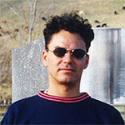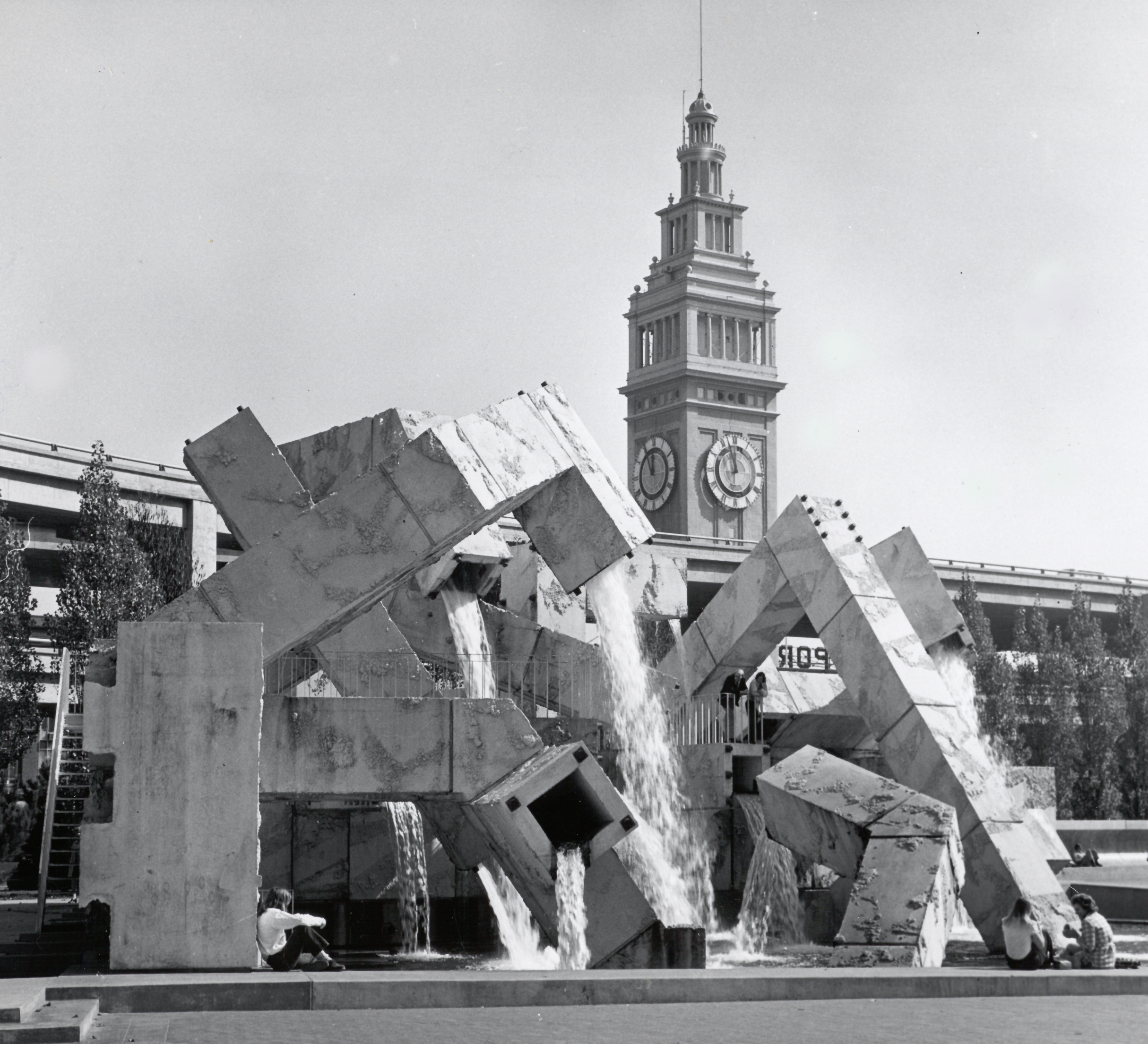
Contemplating Elsewhere
By Mark Taylor
Looking to Alcatraz with Leonard Peltier and Rigo 23
If you live in San Francisco, you have most likely encountered one or more of Rigo 23's early murals. The most famous (and famously desecrated) directed our attention to a lone tree in a small scratch of earth next to a freeway onramp. Located throughout the downtown business district, these murals take on and enlarge the form of traffic signs, those familiar aids to myopic routine, encouraging us to notice a sky full of birds in flight, and wonder about places beyond where we are now.
If you could access the rooftop terrace of the San Francisco Art Institute, you would encounter Rigo 23's 12-foot redwood statue of Native American activist Leonard Peltier facing Alcatraz. Naturally, an artist born on the Portuguese island of Madeira who immigrated to San Francisco at 18 (and regularly crosses boundaries both in his work and in his life) would make contemplating elsewhere a large part of his practice. The Leonard Peltier sculpture sits at the intersection of elsewheres, which include the subject of the work, its location, and the site of its contemplation.
Leonard Peltier has been in prison since 1976, after he was convicted of killing two FBI agents in a shootout on the Pine Ridge Reservation. Many groups, including Amnesty International, believe he did not receive a fair trial and consider Peltier a political prisoner. Rigo writes, "The statue is a collaboration between two artists with dramatically different origins and life experiences: Leonard painted himself on a small canvas from within the physical confines of a United States Penitentiary and I gave it a three-dimensional echo from the expansive and privileged space of contemporary transcontinental cultural dialogue."
This partnership is one in a series Rigo 23 has initiated with members of marginalized groups around the globe, including the Black Panthers and the Zapatistas. Similar to the Clarion Alley Mural Project, which the artist co-founded in 1992 to support "socially-engaged and aesthetically innovative public art," Rigo's collaborations add more diverse voices and perspectives to the corporate landscape, dominated by what the he calls "mercenary messages". Rigo 23's interventions reorient our relationship to public space and to each other. His work comes out of an impulse to participate "in a movement towards a more realistic and just global citizenship. The need is less to integrate the field of visual art, and more to participate in the life of our times.”
To that end, the 12-foot totem takes the form of a Cigar Store Indian, still found outside local tobacco stores. This symbol represents the failure of the U.S. education system and the nation's inability to deal with its own history. "Every Cigar Store Indian Chief chained to a pole, gate or metal hook on America's streets," Rigo writes, "makes it easier for the state to keep Leonard Peltier in prison - out of sight and out of mind - normalizing the unconscionable." While most of the sculpture is made of non-organic materials, the skin is carved out of redwood from the Klamath river, where many of the artist's native mentors and teachers live. Even in 2020, the skin remains the site of too many elsewheres.
The monument has been traveling the U.S. since its creation in 2016 and suffered protest and censorship along the way. Most famously, it was removed from the grounds outside American University's Katzen Arts Center in Washington DC after being targeted by the FBI Agents Association. The figure's detachable feet, however, have had a different experience, joining ceremonies and protests across the country, including Standing Rock, where participants were encouraged to stand on Peltier's feet, sharing his journey and becoming part of his path.
Which brings us back to the image of an imprisoned Leonard Peltier gazing at Alcatraz. Once home to a federal penitentiary, the island has been the focal point in the struggle for native sovereignty and cultural survival since 1969. This, the artist writes, connects "the plight of the individual with the historical plight of all native peoples of North America and this hemisphere."
At the recent unveiling ceremony, Rigo, who received his undergraduate education at the San Francisco Art Institute, thanked the "wounded institution" for making the space and time to show an artwork that has been protested and was briefly disappeared on its journey across the country. Rigo noted the connection between his embattled statue coming to a temporary rest atop his alma mater while statues all over the world were falling. Speaking from his home in Madeira, he was surprised when people there tore down a statue of Columbus. Rigo offered this international action as a reminder that American society, or rather the people when they take to the streets, have the capacity to influence events far outside U.S. borders. As Rigo 23's art so often reminds us, we have to shake ourselves out of our complacency, interrupt our routines, and look beyond our own boundaries of skin and country.
→ March 28, 2021
San Francisco Art Institute, Rooftop Terrace
800 Chestnut Street, San Francisco
sfai.edu
Image: The Leonard Peltier Statue by Rigo 23 at the San Francisco Art Institute, 2020. Photo by Alex Peterson.



